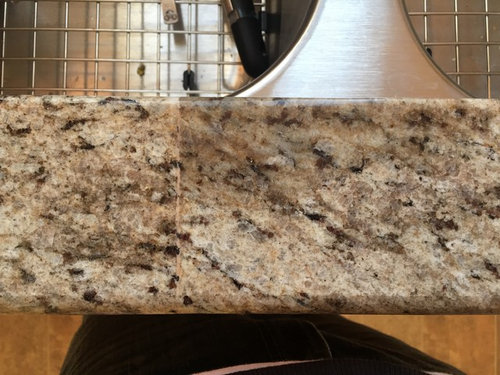But what s called the spill test is usually an even better way of determining this you just pour a little water on a test piece of granite and see if it changes color.
If you sealed the granite will make darker.
Note the time that you placed the water on the counter and time the water to see how long it takes to absorb the granite will darken.
Even a completely sealed granite countertop can stain if a spill is left to sit for long enough.
To test your surface leave a few drops of water or a wet paper towel on the granite for 10 to 15 minutes doing this in an inconspicuous area.
Test whether the granite needs sealing.
Apple pie order gives some good advice but i would seal the samples first except the quartz or at least part of the sample so you can see the difference.
A lot is made up of a bunch of bundles.
And of course more lightly colored granite is more likely to show stains than darker colors so if you have a white or other pale colored granite countertop it s important to be extra vigilant.
Pour a bit of water on the counter.
You can always look up the absorption rating of your stone if you know its kind and origin stones with less than 25 absorption don t usually need to be sealed.
Lighter granite is more porous than darker and black is one the most dense stones out there.
Although you may find that many countertops do not require being sealed applying a sealer is common practice.
1 4 cup should be enough.
If you re going to place food or drinks on a granite table it s a good idea to seal it.
Perform a simple water test to see if your granite countertops need to be sealed.
As mentioned earlier dark stone is often more dense and won t need sealing but lighter color granites are often more porous and will definitely need to be sealed.










